Clematis "Nelly Moser": description, tips for growing and reproduction
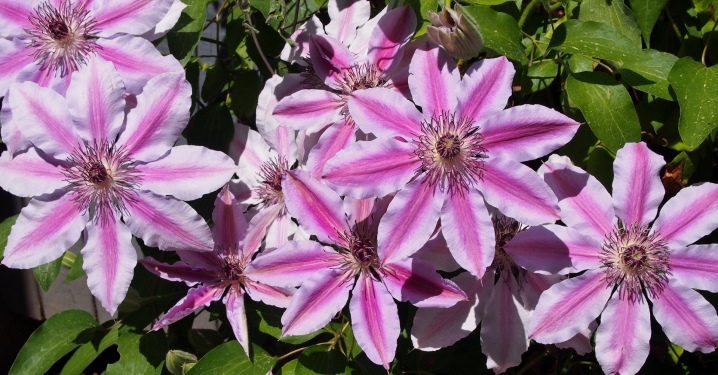
Many growers refuse to plant clematis, believing that caring for this crop will take a lot of time and effort. However, knowing all the needs of the plant, caring for this unusual flower is not only easy, but also interesting. Especially if you choose a variety that is undemanding in care, for example, "Nelly Moser".
Description of the variety
The variety is characterized by a medium-sized liana - about 3 m. It forms up to 15 shoots per bush. The gap between the nodes is 12-16 cm. Leaves up to the 15th node have an unusual trifoliate shape, their length is about 20 cm; the dimensions of the following leaves do not exceed 10 cm.
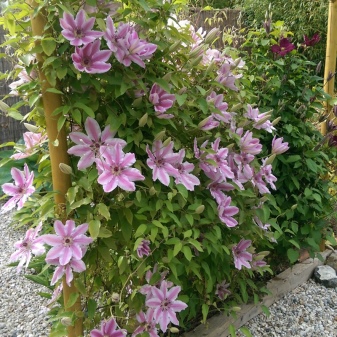

This variety has fibrous roots. The buds are formed on the shoots of the past and this year. The size of the peduncles is 16 cm. The shape of the flower is presented in a star-shaped form, its width is up to 20 cm. It is decorated with massive petals - 10 cm long and 4 cm wide. The inside of the flower is light purple in color with a red line in the middle, and the outer edges are light.
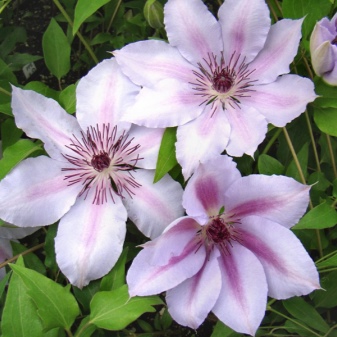
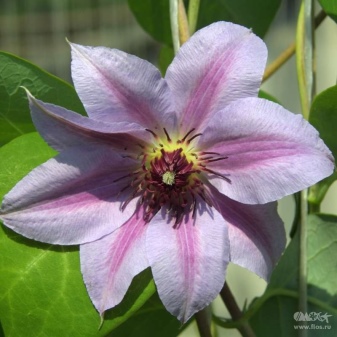
This is a hybrid variety, the last year's shoots bloom in June, and new ones in July. Therefore, the plant does not need spring pruning. Its flowering is long, the last flowers can be admired until the onset of cold weather.
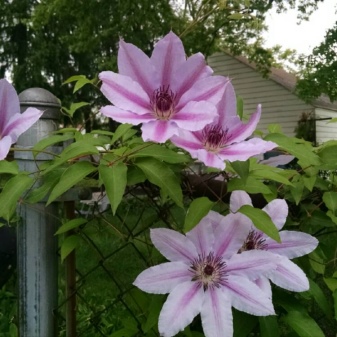
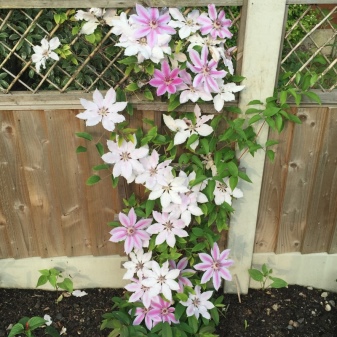
The variety is recommended for planting in central Russia, as it has good frost resistance when grown outdoors. This representative of the flora can withstand temperatures down to -34 degrees. However, at lower temperatures, the crop needs shelter. The variety also withstands drought well and does not require abundant and frequent watering.

Landing rules
Before you start planting clematis, it is important to find the right site for it. So, the best option is a place well-lit by the sun in the morning and shaded in the daytime. If the culture is planted in a warm area, then gardeners recommend choosing the east side. The fact is that the plant has wide roots that grow almost on the surface, and therefore can overheat in the sun, which will lead to death. In this regard, a shadow should be created on the site.
Also keep in mind that the flower bed should not be blown by the winds, since the plant has rather vulnerable vines that can break under the influence of a strong gust. Do not plant flowers of the presented variety in a lowland - this culture does not like stagnant water, waterlogging can provoke rotting of the root system.
Also, beware of planting it under a slope of the roof, otherwise the flowing rainwater will have a detrimental effect on the condition of the flower.

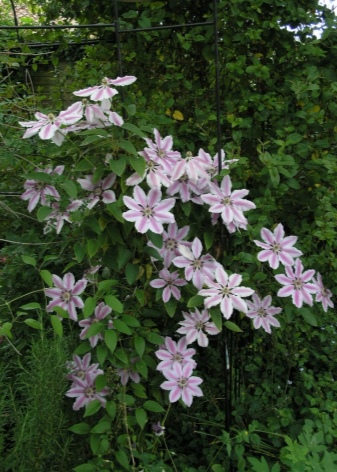
The planting time is calculated taking into account the climate of the region. If these are northern regions or the central strip, then planting in late April - early May is recommended. Landing in September is also acceptable. In southern climates, it is best to plan for planting in early October.
Another important point is the purchase of a seedling. Healthy quality planting material has the following characteristics:
he has a fully formed rhizome, consisting of 5 processes with a length of 30 cm;
the roots have a uniform density and surface without bulges and depressions;
two or more developed buds are observed on the stem.
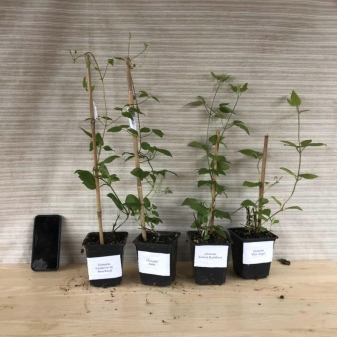
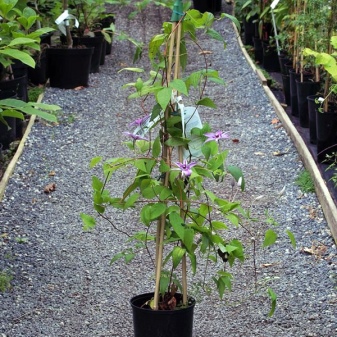
If the gardener became the owner of a weak seedling, then it is better to refuse to plant it on the site. Try to grow this specimen in a pot or greenhouse, and for the next season, plan to transplant it to an open bed. Also, when buying seedlings, it is better to choose samples in containers - the roots are more reliably preserved in them, which means that the plant adapts better to a new location.
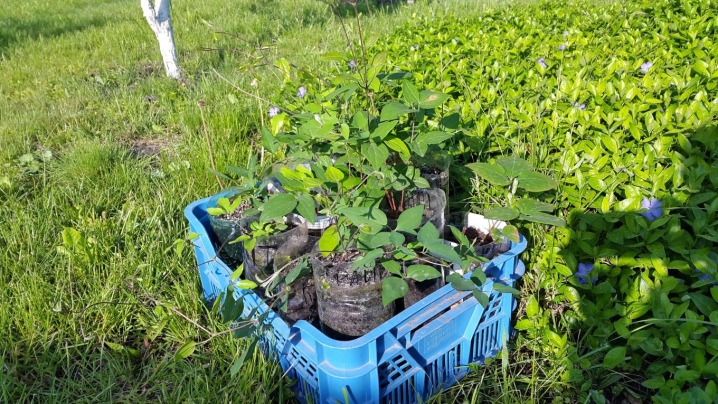
Soil parameters are also important factors when planting. The hybrid form prefers to grow on fertile land with a high content of humus. The root system grows rapidly in loose soil. Loamy soils are well suited; if necessary, you can supplement their composition with sand. Landing technology is as follows:
Dig holes 60 cm wide and deep.
Drain on a 15 cm layer using, for example, small pebbles.
Add formula. It can be prepared by combining humus (2 buckets), peat (2 buckets), sand (1 bucket), ash (500 g), mineral fertilizer (200 g). The resulting compound is poured into the well 4 weeks before planting. During this period, the soil must settle and be processed.
After a month, remove a portion of the mixture from the hole in accordance with the dimensions of the root system of the planting material.
Form an earthen mound in the middle.
Plant the selected seedling together with an earthen lump so that the root collar sinks to a depth of 12 cm. Then the roots will be well protected from cold and moisture, which will have a positive effect on the health of the flower.
Moisten the planting site thoroughly with water.
Sprinkle with a thin layer of sand and place the nutrient mixture on top.
Place a support for a garter, moisten the area again and cover with peat.
For group planting, plant different specimens 1 m apart.
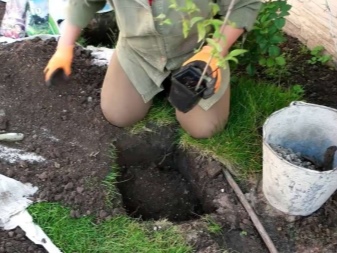
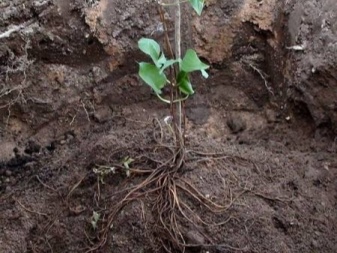
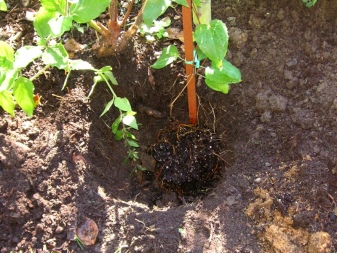
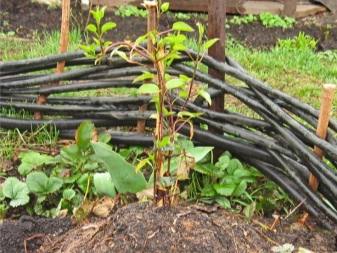
Follow-up care
Watering
In the absence of drought, the plant needs to be watered weekly with a small amount of water. Do not overdo it with the portion - waterlogging is dangerous for the culture. It is recommended to carry out the procedure in the morning, then during the day all the moisture will be absorbed and in the evening it will be possible to mulch the soil around the seedling. In drought, the plant is watered 2-3 times a week.
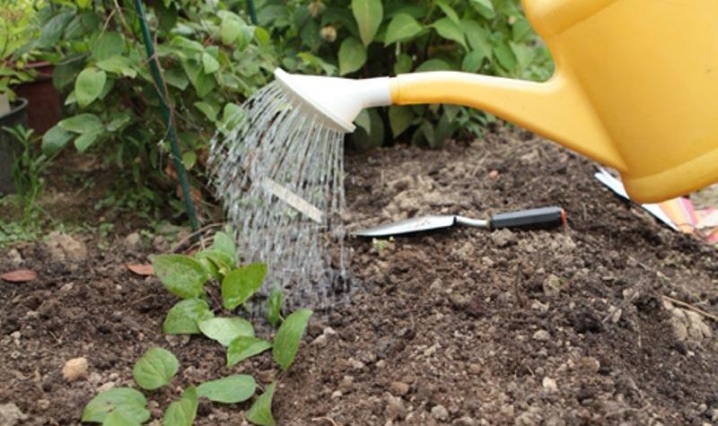
Top dressing
The very first fertilizer for the presented variety can be organic feeding. As an additional food, bird droppings or mullein are suitable - 1 liter of these ingredients is diluted in a bucket of water and the flower is watered with the resulting solution.
As a mineral supplement, you can use 60 g of products containing potassium and phosphorus. After flowering, the last fertilizer is applied - potash-phosphorus complexes are again allowed.
It is forbidden to fertilize the plant directly during flowering.
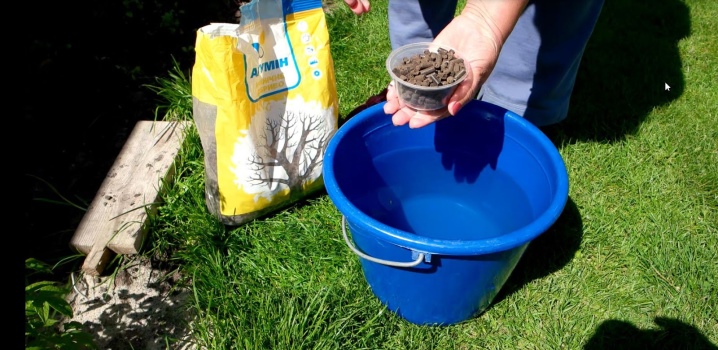
Trimming group
The variety belongs to the second pruning group. By frost, gardeners eliminate shoots until the middle of the growth of the shrub. The manipulation is performed in stages:
- after the first flowering, cut off the faded fragments of last year's shoots;
- at the end of the second flowering, remove the young dried residues.
The second pruning can be carried out using this technology.
The growth point can be eliminated. This procedure will ensure early flowering in the next season.
It is allowed to remove the shoot up to the first true leaf. In this case, the flowering will be uniform.
You can remove the entire shoot, and then the shrub will be well cut.
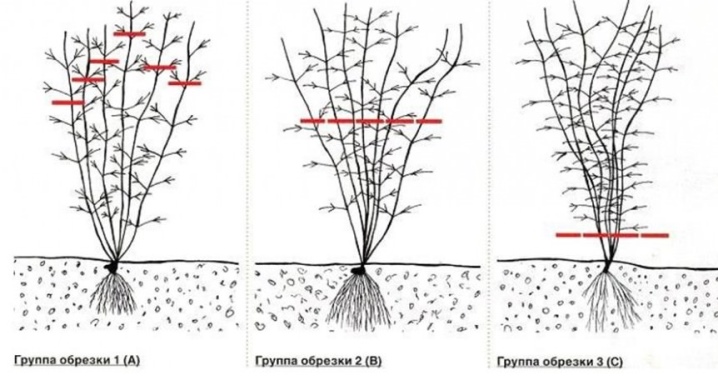
After the first stage of pruning the bush, fresh shoots develop for about 1.5 months and form new flower buds. Some growers advise not to cut off young growth at all, but simply roll it up in a ring and press it to the ground with metal staples.
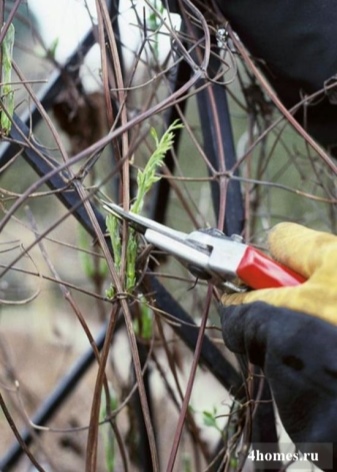
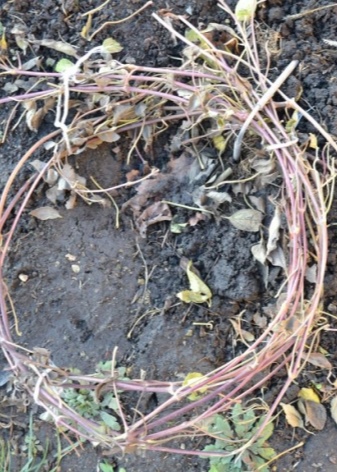
Disease and pest control
In general, this variety has a fairly strong immunity to diseases, but it cannot resist some ailments. For example, the bush often falls prey to a fungus called wilt. It is important to eliminate the diseased specimen from the site in a timely manner and thoroughly disinfect the soil. DFor processing, copper oxychloride or copper sulfate are suitable.
Often this culture is affected by powdery mildew. You can get rid of the disease with the help of a soda solution. Another way is a mixture of copper sulfate (30 g) and laundry soap (300 g), dissolved in 10 liters of water.

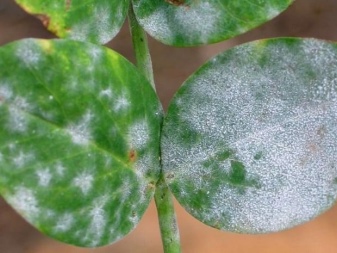
Rust can also be found on the plant. The most effective drug for this disease is a two percent solution of Bordeaux liquid.
If the culture is attacked by gray rot, then the Fundazol solution will help to cope with the problem.
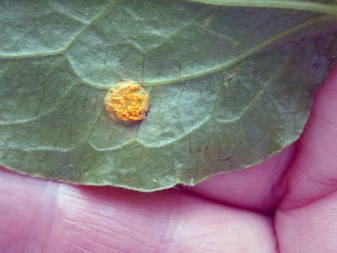
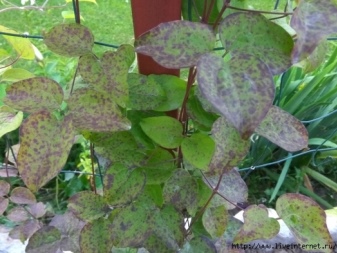
As for insects, most often ticks and aphids like to feast on this plant, and insecticides will help to protect flowers from these pests most efficiently. Sometimes snails and slugs, which prefer to feed on young shoots, cause harm to plants. The bait, for example, cabbage leaves, will help to overcome these insects. Also, areas on the path of insects to the flower are sprinkled with ash.
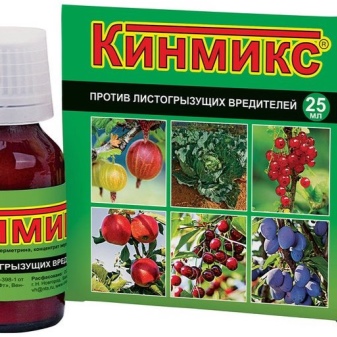
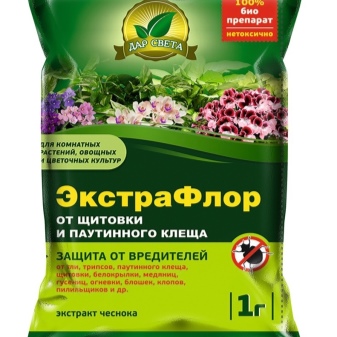
Preparing for winter
If the plant is planted in a northern area, it is recommended to insulate it for the winter. The flower needs shelter when the ground freezes to a depth of 5 cm. Before performing the defense, the lianas are twisted and bent to the surface of the earth. Surface roots are sprinkled with peat in such a way that a hill is formed.
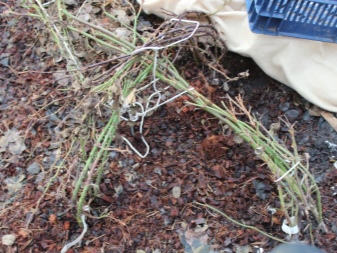
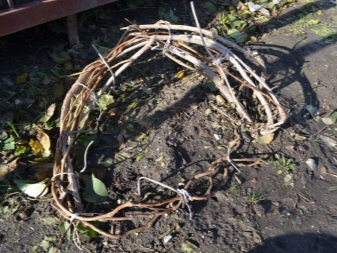
Pine branches or agrofibre can serve as a shelter.
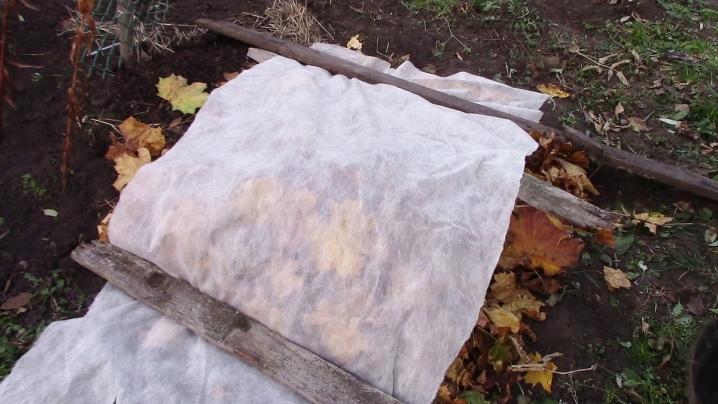
Reproduction
There are several ways to plant flowers.
Division of the bush. This breeding method is suitable for specimens no more than 7 years old. Older plants have a well-developed rhizome, which can break off during separation. To divide the bush, it is dug out, removed from the planting pit, gently shaken off and cut with a well-sharpened knife so that buds are present on each half of the root collar.
Pinning. In this case, the container is filled with loose nutritious soil, the shoot is pinned at the site of the node formation. Before this, the containers are well deepened into the ground. For some time, young shoots will increase in growth, if necessary, the gardener should add a tubercle to the soil. By the fall, the shoots pinned in the spring turn into healthy, sustainable planting material.
Autumn layering. This method is relevant in October. Buds and foliage are removed from the sprouts to a full-fledged bud - and this is what needs to be rooted. A layer of peat is laid in the groove. This component reliably holds water and allows air to pass through. Further, the layering is covered with straw and dry foliage. In the spring, the planting site requires abundant watering. In autumn, young shoots can be planted in a new area.
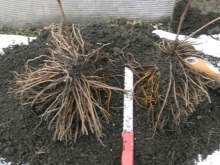
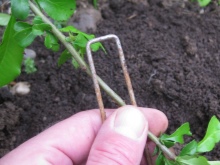
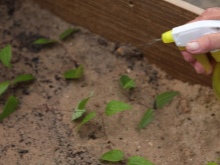
Examples in landscape design
A flexible, pretty plant with large colorful buds that can decorate any corner of the garden. So, the presented variety looks very beautiful against the background of coniferous ornamental trees or in the shade of lilac and viburnum bushes. You can use the flower in a vertical design.
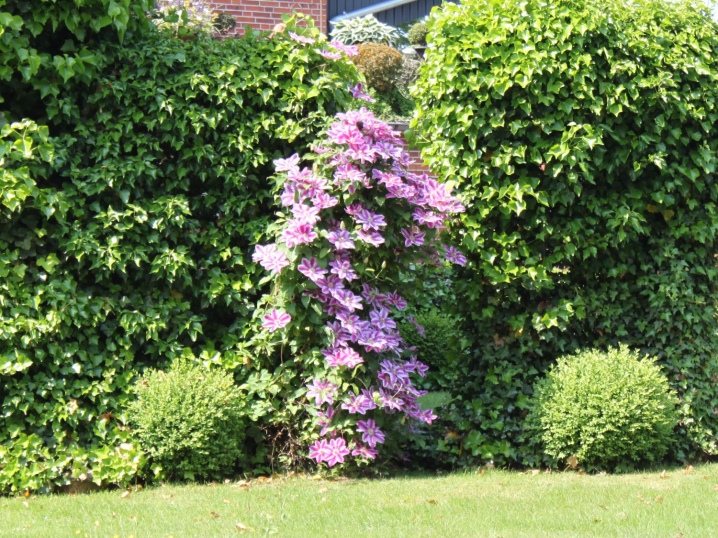
A very picturesque landscape will turn out if you braid a vine on a gazebo, a pillar, a building facade, a gate. The plant looks unusual when developing an alpine slide. You can let a vine among stones and other colorful flowers. An aesthetic look is also created when decorating garden arches.


For information on how to plant and care for clematis varieties "Nelly Moser", see the next video.







































































































The comment was sent successfully.